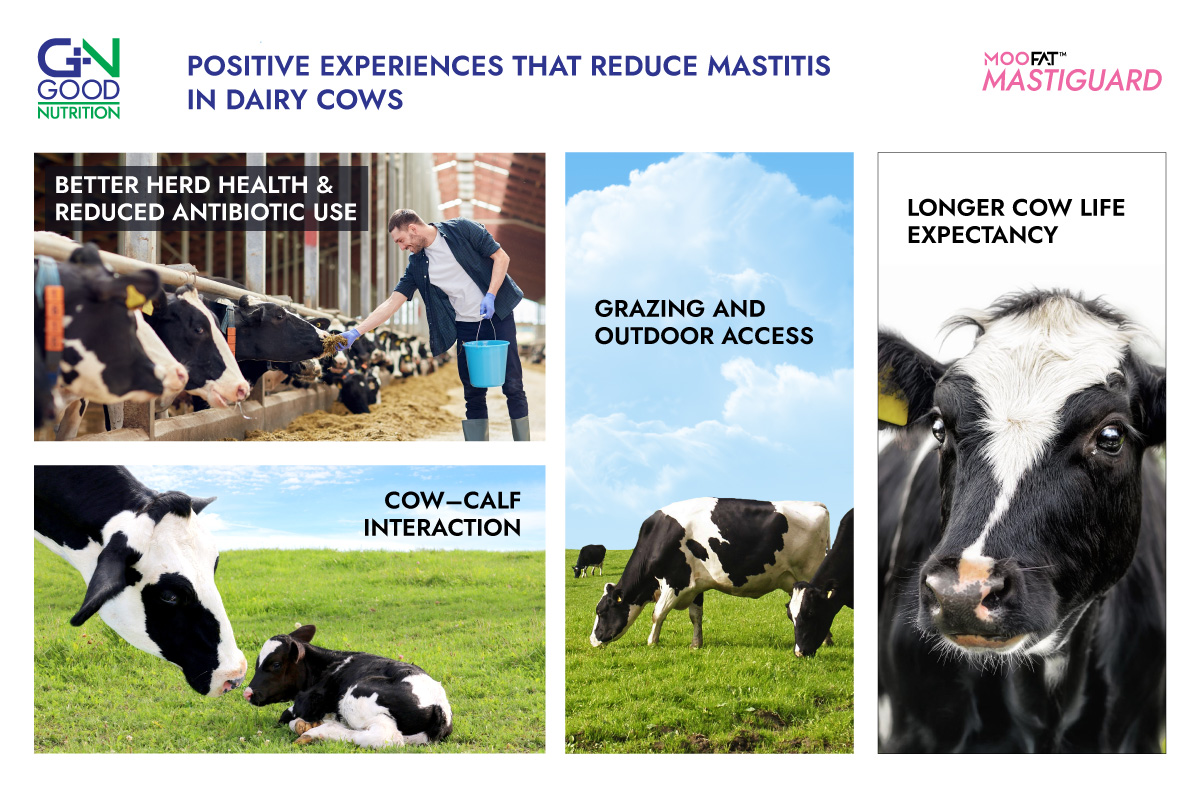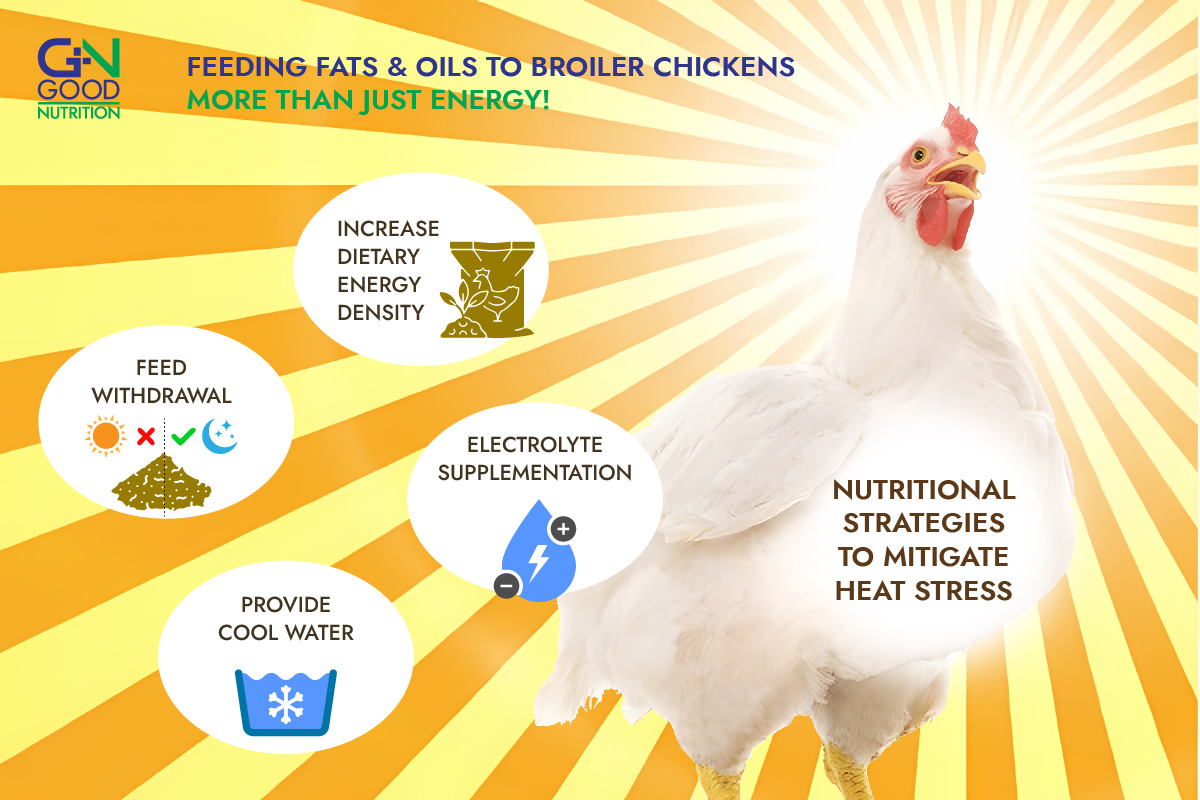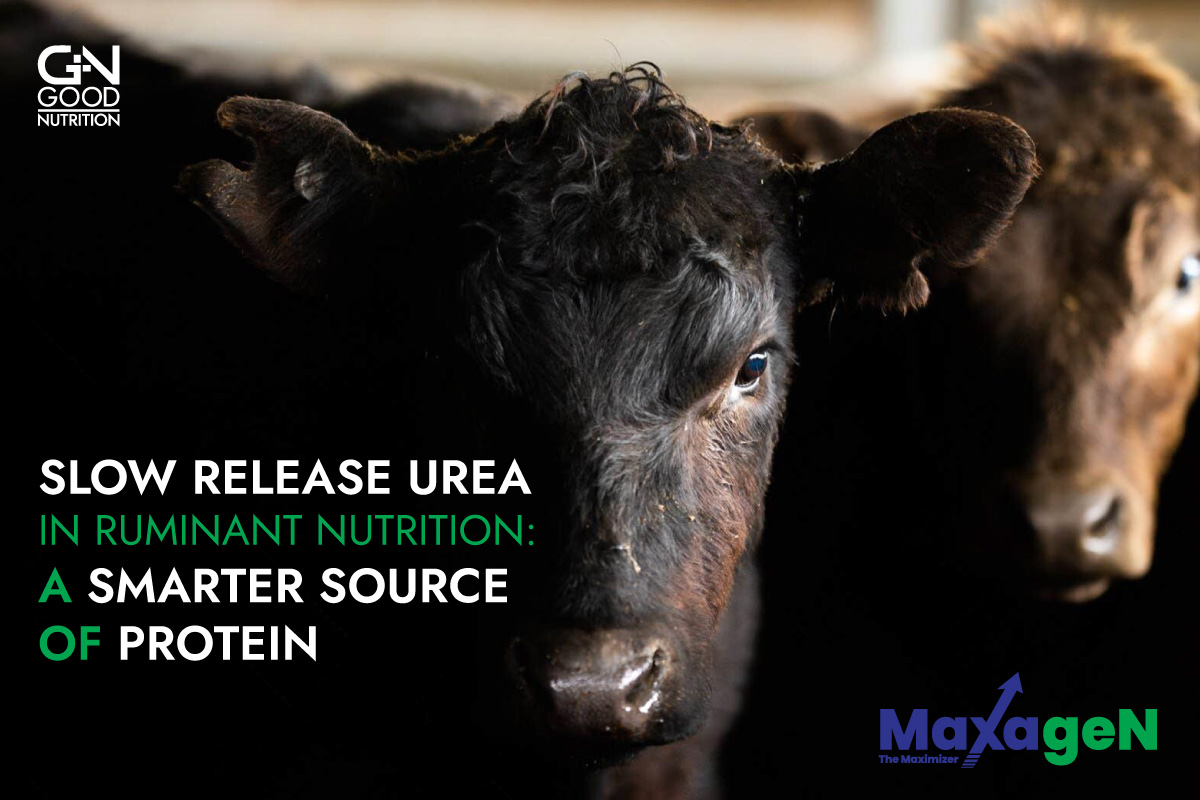Mastitis remains one of the most costly diseases in dairy farming, reducing milk yield, affecting cow health, and draining farm profitability. Traditionally, the Five Freedoms of Animal Welfare have set the foundation for decent cow care. But modern dairy science shows that simply preventing suffering is not enough. To truly improve dairy cow welfare and farm efficiency, producers must go beyond comfort and focus on creating positive experiences for cows.
This shift directly impacts mastitis prevention and results in significant cost savings for dairy farmers.
The Five Freedoms: A Foundation for Animal Welfare
The classic Five Freedoms provide a strong welfare baseline:
- Freedom from hunger and thirst – access to clean water and a nutritious diet.
- Freedom from discomfort – a suitable environment with shelter and rest areas.
- Freedom from pain, injury, or disease – prevention and treatment of illness.
- Freedom to express normal behaviour – space and social opportunities.
- Freedom from fear and distress – care that avoids mental suffering.
These freedoms are essential, but today’s consumers and research push dairy farms toward something more: positive welfare that enhances cow health and productivity while lowering mastitis risk.
Positive Experiences That Reduce Mastitis in Dairy Cows
Grazing and Outdoor Access
Allowing cows to graze, even part of the day, provides proven benefits. Grazing lowers somatic cell counts (SCC), one of the key indicators of mastitis. It also reduces the stress of standing on hard flooring, which protects udders and hooves, while fresh air and sunlight limit bacterial growth.
Research shows pasture-based systems can reduce mastitis incidence by up to 25 percent, saving farmers on treatment costs and improving milk quality.
Cow–Calf Interaction
While traditional dairy systems often separate calves immediately, limited early-life cow–calf interaction can improve herd health in the long run. Calves exposed to maternal antibodies and social contact develop stronger immune systems. As replacement heifers, these animals are less prone to mastitis later in life.
Each mastitis case in a young heifer can reduce first-lactation yield by 200 to 400 litres. Preventing disease through stronger immunity directly protects future farm income.
Better Herd Health and Reduced Antibiotic Use
Preventive welfare practices such as clean bedding, stress reduction, and balanced diets cut down on infections and reduce reliance on antibiotics. This leads to fewer discarded milk batches due to residues and lowers the risk of antimicrobial resistance, which is increasingly important for consumer confidence and regulatory compliance.
The cost of antibiotics for mastitis treatment averages €30 to €60 per case, and when discarded milk is included, total costs can double.
Longer Cow Life Expectancy
Mastitis is one of the top three causes of early culling in dairy cows. Preventing it allows cows to remain productive for four to five lactations instead of the usual two to three. This reduces the need for expensive replacement heifers, which can cost €1,200 to €1,800 each.
By reducing mastitis incidence, farms can extend cow longevity and save €300 to €400 per animal annually in replacement and productivity costs.
The Economics of Mastitis Prevention
Mastitis is not only a welfare issue, it is also a serious economic burden. Each case of clinical mastitis costs between €200 and €400, factoring in treatment, discarded milk, labour, and yield losses. Subclinical mastitis, which is harder to detect, can silently reduce yield by 5 to 15 percent, representing hundreds of litres of milk lost per cow per lactation.
For a herd of 100 cows, even with a modest 20 percent incidence rate, annual mastitis costs can easily exceed €8,000 to €12,000. By adopting cow welfare measures that reduce mastitis incidence by 20 to 30 percent, farmers could save thousands of euros each year, while also improving herd health and milk quality.
Mastitis Prevention: A Win–Win for Cows and Farmers
The conclusion is clear. Decent comfort and the old Five Freedoms are no longer enough. By creating positive experiences for dairy cows through grazing access, cow–calf interaction, preventive health measures, and longer lifespans, farmers can enhance animal welfare while directly lowering mastitis rates.
Fewer mastitis cases mean lower veterinary costs, reduced antibiotic use, healthier herds, and more sustainable dairy production.
In short, mastitis prevention through positive welfare practices is not only good ethics, it is good business.





